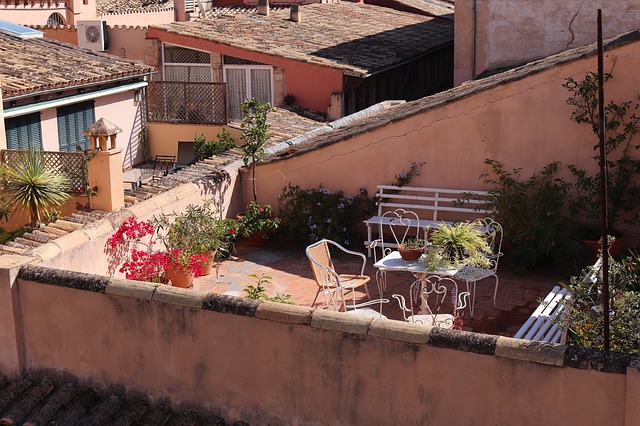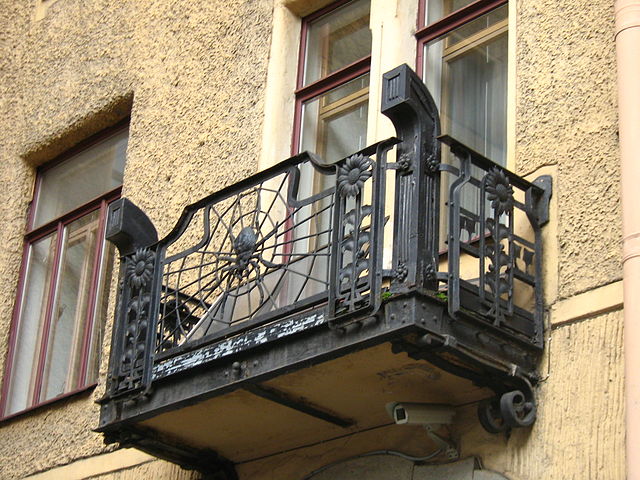Difference Between Terrace and Balcony
Having a terrace or a balcony within your property can increase the average value by up to 12%. Terraces and balconies serve similar purposes within a house, apartment or any property. They provide an additional open space outside the actual property. Both patios and balconies also connect the outdoor and indoor living space of the property.
Most terraces are located at the top of the building, while, balconies are attached to the side of the building. All, in all, both provide essential spaces for relaxation if constructed and designed with the right facilities.
What is a Terrace?
The word terrace was adopted from the Latin word, ‘terra’. ‘Terra’ means earth. Terraces are also known as patios. In most instances, they are raised above the ground and set on flat surfaces. However, today with the significant innovations in architecture and design, most homeowners are opting to create patios on the ground floor as extensions of the living room or kitchen.
Terraces are mostly used for leisure activities such as relaxing, sitting, strolling or resting. Some properties also have jacuzzis and fancy structures on the patios. A grand staircase or balustrade access most patios. Patios can get support from solid foundations either human-made or natural. Most terraces are open to the sky.
The very first terracing is within the agricultural industry. Farmers within different cultures would terrace their farms to facilitate better crop rotation. It was in 3000 and 9834 BCE in the Middle East when the very first architectural terracing was witnessed.
What is a Balcony?
The word balcony comes from the Latin term, ‘balcone’ which signifies a large window. This is because all balconies in the past could only be accessed through a window. Today, balconies are extensions of the indoor floor spaces. Most are usually attached to a room or several indoor areas. They can be used to create transitions between one room and another. In apartments, balconies enable the inhabitants to experience the outdoors at the comfort of their floor space. Some use them to create small gardens with potted plants. Depending on the size, they can also be used as a relaxation point with a bunch of seats to facilitate this.
Differences Between Terrace and Balcony
Location
Balconies must have a building next to them; they have to be attached to the side of a structure. Terraces, on the other hand, do not have this requirement. They can be free-standing structures above or on the ground.
Use
Balconies are mostly used as small gardening points, relaxing centers where homeowners can connect to the outdoors and if size allows a sitting place. Terraces have many uses including those listed above for balconies.
Size
Terraces are way bigger than balconies. This enables constructors and homeowners to utilize their terraces for several things, some put bars, jacuzzis, entertainment spots and even restaurants if the size allows.
Accessibility
Most balconies in mansions or apartments are accessed through a door within a room or rooms. Balconies are more private and constricted to use by the apartment residents. Terraces are accessible through staircases, or even through several rooms. In the case of apartments, all the residents in the building can access the patio.
Origin
Terrace came from a Latin word, ‘terra’ which means earth. Balcony cane from a Latin word, ‘balcone’, which means windows.
Terrace vs. Balcony: Comparison Chart
Summary of Terrace Vs. Balcony
- Terraces and balconies both give access to the outdoor world by connecting the interior and exterior of a property.
- Terraces are also called patios and the term came from, ‘terra’ a Latin word meaning earth.
- Balcony came from a Latin word, ‘balcone’, which means windows.
- Terraces are constructed on their own from the ground or created on rooftops of a building.
- Balconies have to be attached to the side of a building.
- Balconies are small in size and are have minimal uses.
- Terraces are larger and can be used in many ways including gardens, entertainment spots, and restaurants.
- In most residential areas the access of balconies is private and restricted to home residents of one apartment. Terraces are mostly public in that all the residents an apartment building can access it.
- Difference Between S Corp and C Corp - September 9, 2018
- Difference Between Terrace and Balcony - September 9, 2018
- Difference Between Anabaptists and Evangelicals - August 31, 2018
Search DifferenceBetween.net :
Leave a Response
References :
[0]Image credit: https://pixabay.com/en/terrace-mediterranean-roof-terrace-2835260/
[1]Image credit: https://upload.wikimedia.org/wikipedia/commons/thumb/a/a7/Lidval_House_balcony.jpg/640px-Lidval_House_balcony.jpg
[2]Singh, D. J., & Davidson, J. (2016). Ornamenting Your House - Choosing the Best Plants for Your Balcony and Terrace. Mendon Cottage Books.
[3]Osborne, M. (2012). Roof Terrace Gardening: Roof Terraces and Balcony Designs for Stunning Gardens in the Sky. Anness Publishing.
[4]Mola, F. Z. (2015). Outside Living: Terraces, Balconies, Roof Decks, Courtyards, Pocket Gardens, and Other Small Outdoor Spaces. Universe Publishing.



